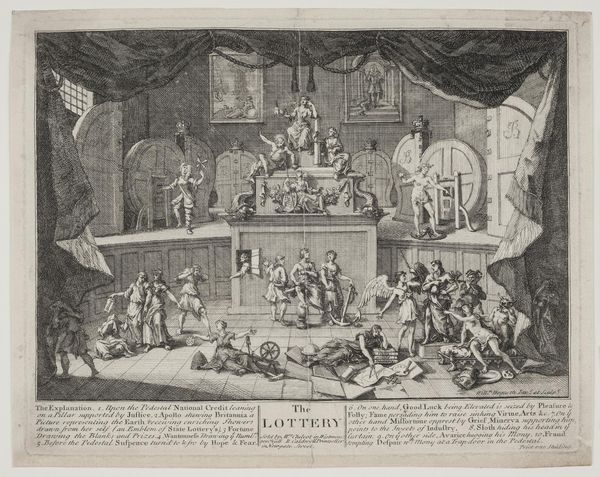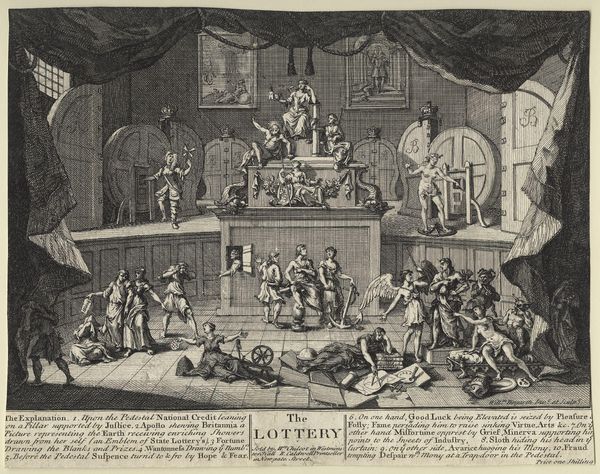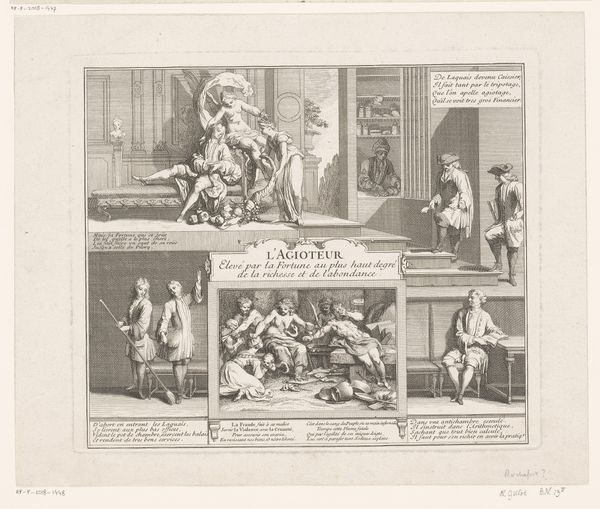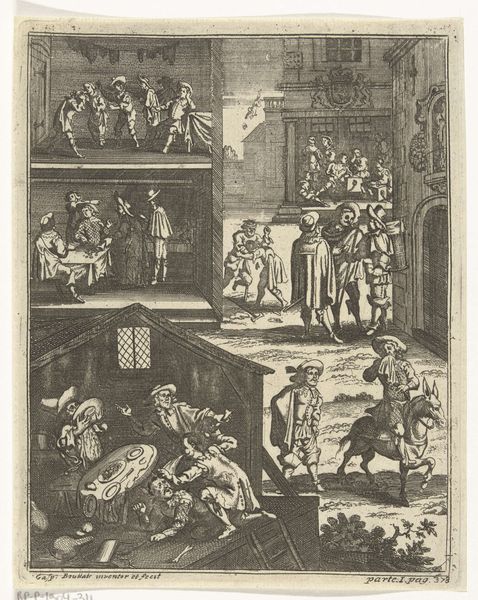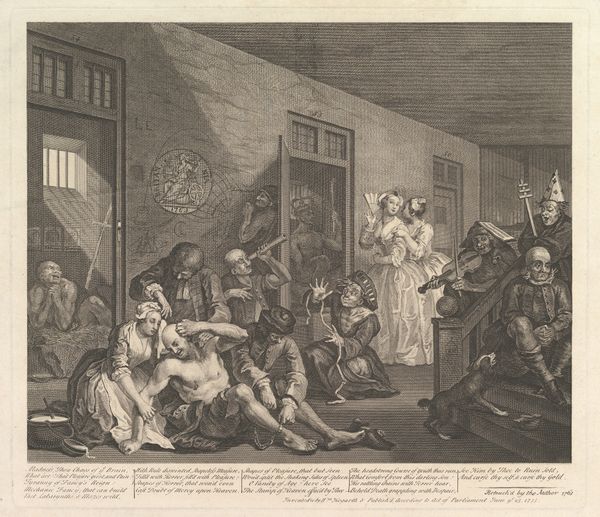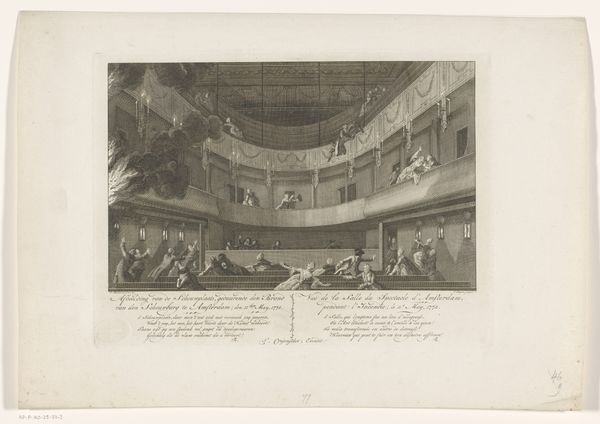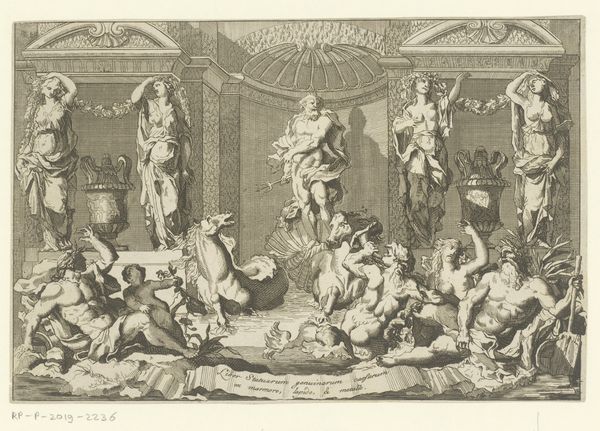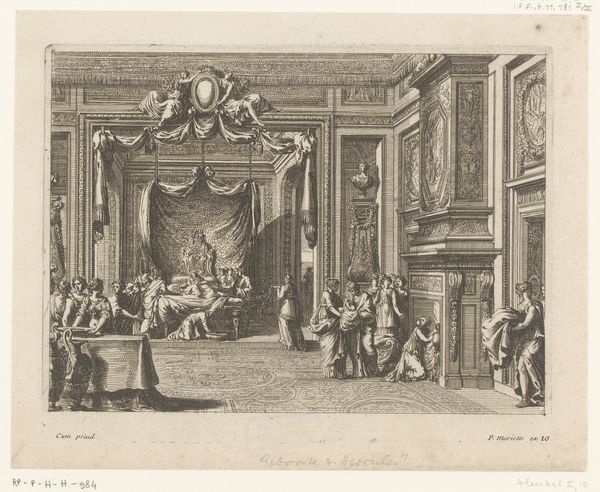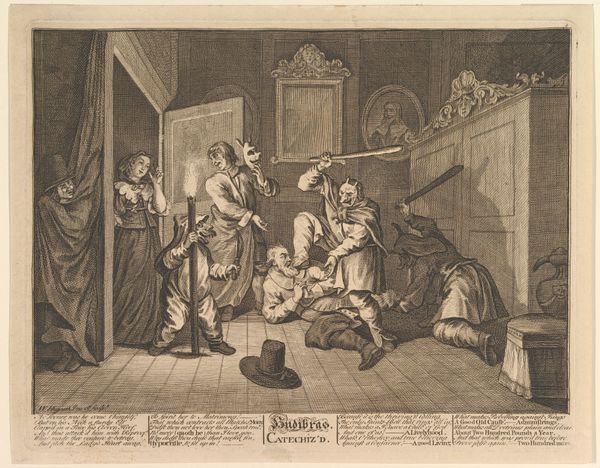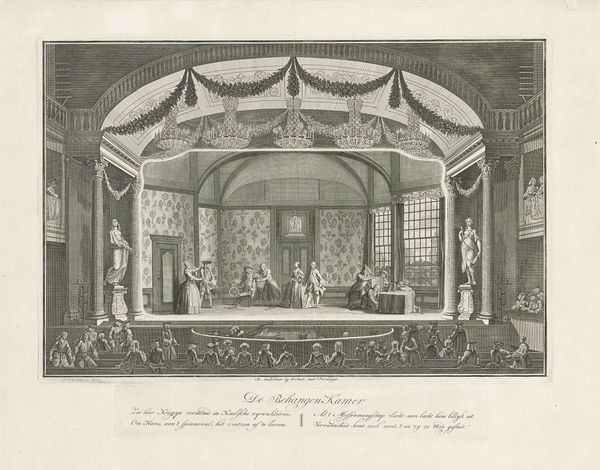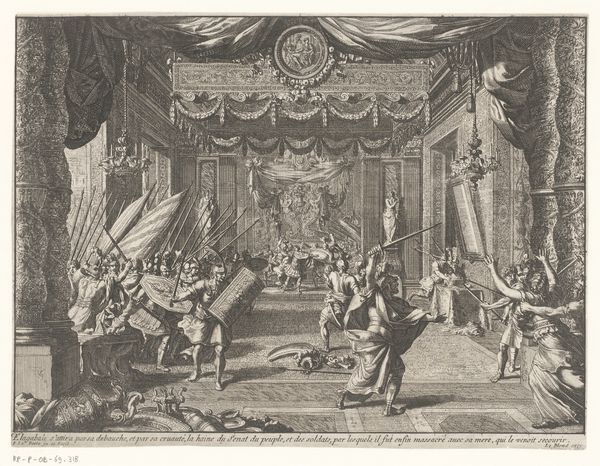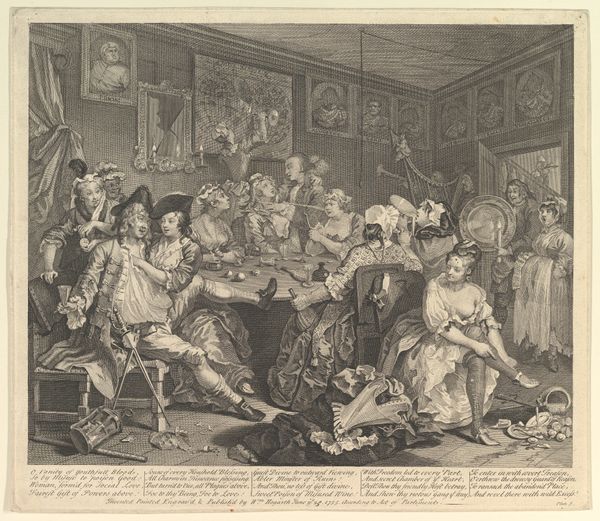
drawing, print, paper, engraving
#
drawing
#
narrative-art
#
baroque
# print
#
paper
#
genre-painting
#
history-painting
#
engraving
Dimensions: plate: 10 1/2 x 13 1/2 in. (26.7 x 34.3 cm) sheet: 10 3/4 x 14 in. (27.3 x 35.6 cm)
Copyright: Public Domain
William Hogarth made this print, entitled 'The Lottery', using engraving techniques. These were, in his time, anything but 'fine art' processes. Rather, they were a commercial medium, used to reproduce images quickly and cheaply. Here, Hogarth uses engraving to reflect on the social impact of Britain's state-sponsored lottery. Look closely and you’ll see the figures are rendered with sharp, precise lines, which would have allowed for a relatively quick printing process. This enabled mass production, making the image widely accessible to the public. Hogarth wasn't just making an aesthetic choice; he was engaging with the very system he critiques. He was mass-producing an image about the dangers of financial speculation, using the same logic of efficiency and wide distribution that fueled the lottery's popularity. This tension makes the work especially poignant, as Hogarth implicates himself in the very system he critiques. It reminds us that art is not separate from the world of making and consumption, but deeply embedded within it.
Comments
No comments
Be the first to comment and join the conversation on the ultimate creative platform.
